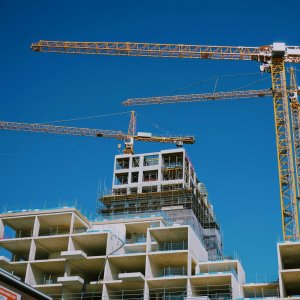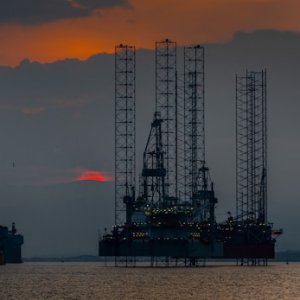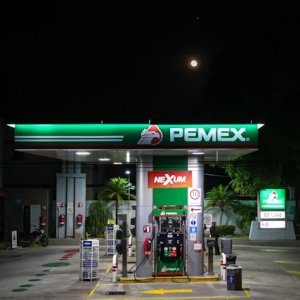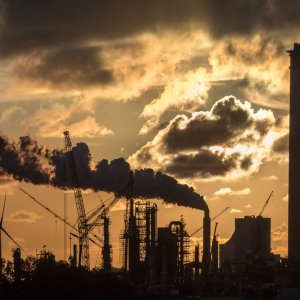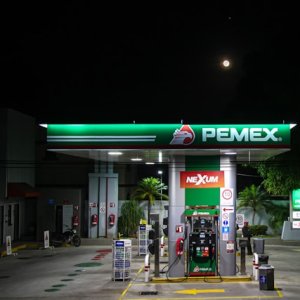More to Coatings Than Meets the Eye

STORY INLINE POST
It is very common to hear about coating failures. Examples include fallen coatings, rust on the surface, premature coating failures, such as blistering or delaminations, and the coating not lasting long enough, forcing earlier-than-expected maintenance.
Throughout my career I have had to listen to these and other complaints related to coatings; however, I have rarely heard questions like the following:
- How was the surface prepared?
- What were the environmental conditions at the time of the surface preparation?
- Was the substrate cleaned previously with a solvent? What kind?
- Were anchor profiles measured?
- Were the soluble salts in the substrate measured?
- How much time passed between surface preparation and coating application?
Surface preparation is the first step toward a successful performance of an anticorrosive system; that is, more than 80 percent of the success of an anticorrosive system in the long term will depend on the surface preparation for a new construction or having had the proper maintenance work completed.
Depending on the substrate, its conditions and whether it is a new construction or maintenance, we can analyze the elements that make up the surface preparation, as well as its function for anticorrosive protection.
Definition: What Is Surface Preparation?
In the field of anticorrosive coatings, surface preparation can be defined as the cleaning of a substrate prior to receiving protection treatment. Surface preparation can be done using solvents, chemicals, abrasives, applying pressure or water at high or ultra-pressure.
Objective
The objective of surface preparation is to remove any type of visible and non-visible contaminant that may intervene in the adhesion of a coating, causing a short- or long-term failure, including the low performance of the final system applied.
The most common contaminants that can be removed by surface preparation are:
- Rolling husk or calamine (steel)
- Oil
- Grease
- Chlorides
- Sulfates
- Oxides
- Dirt
- Poorly adhered paint/coatings
Environmental Conditions
Some of the basic factors for a surface preparation to be successful and those that we have to pay close attention to, depending on the system to be applied and the environment housing the structure, are the following:
- Environment temperature (between 8°C and 40°C).
- Substrate temperature (between 8°C and 40°C).
- Relative humidity (RH) percentage (depending on the coating technology, usually not exceeding 85 percent RH).
- Dew temperature (the difference between surface temperature and dew temperature should be higher than 3°C)
Substrate Conditions
Another factor that must be taken into account when performing a surface preparation by abrasive jet to a metal, is to know the type of steel to be prepared. Basically, there are four degrees that are the most common:
- Corrosion Grade A
- Corrosion Grade B
- Corrosion Grade C
- Corrosion Grade D
There may be some cases where it is necessary to prepare a surface with D+ grades but in these cases, steel stability studies generally are required. If an abrasive jet cleaning is feasible, then other types of coatings will have to be used with greater thickness, greater hardness and flexibility in order to support the steel and keep it stable.
Why Do We Do Surface Preparation?
The purpose of surface preparation is to ensure maximum bonding force for adhesion at the interface between the substrate and the coating, these types of adhesions can be chemical, polar or mechanical.
In this article, I will only address the mechanical adhesion between substrate and coating.
The mechanical adhesion of a substrate following a surface preparation or surface cleaning by abrasive jet is associated with the roughness of the surface or anchor profile.
The anchor profile is the roughness of the surface formed by the peaks and valleys of the substrate, which can vary in ranges of height and depth; however, of importance for coatings is the number of peaks and valleys, which will increase adhesion in the surface area and in the current roughness.
Due to their chemical nature, some coatings have relatively poor adhesion or they need a deeper anchor profile, which requires greater roughness or a higher anchor profile to obtain adequate adhesion.
Most high-performance coatings can obtain adequate adhesion with an anchor profile at least 1-2 mils of an inch thousandths deep.
The anchor profile will depend on the angle of the abrasive jet, the speed of the particle, the size of the abrasive and the hardness of the surface.
Types of Abrasives
Abrasives are divided into two large groups:
- Non-metallic abrasives: silica sand, quartz, garnet, zirconium, walnut shell, eggshell, silicon carbide, dry ice, among others.
- Metal abrasives: shot and steel pellet
Within the metal abrasives that are mostly used in the industry for their durability, recycling and practicality, their shape and size must be considered since the pattern and depth that the anchor profile will have after cleaning with an abrasive jet will depend on them.
Types of Surface Preparation
The cleaning or preparation of a surface by abrasive jet is a technique to remove lamination husk, rust, adhered or poorly adhered paints, as well as any foreign material that may be on the surface. As a result, it is important to know what type of cleaning we will perform for the required work. This will be provided to us by a specification according to the quality and performance the work requires. This is why surface preparation has been classified into the following types of cleaning, according to Nace (National Association of Corrosion Engineers) and SSPC (Structural Steel Paint Council). Today, both associations have come together to create the AMPP (Association for Protective and Performance Materials), while still retaining their independent names. We can also reference other important committees, such as the Swiss standards (SIS) and the British standards (BIS); however, the most used are NACE, SSPC and SIS. Here are the most used:
|
TYPES OF CLEANING |
SSPC |
NACE |
|
Solvent |
SSPC SP-1 |
|
|
Manual |
SSPC SP-2 |
|
|
Mechanical Manual |
SSPC SP-3 |
|
|
White Metal |
SSPC SP-5 |
NACE #1 |
|
Metal Almost White |
SSPC SP-10 |
NACE #2 |
|
Commercial Level |
SSPC SP-6 |
NACE #3 |
|
SSPC SP-7 |
NACE #4 |
|
|
Chemical |
SSPC SP-8 |
|
|
High Pressure Water / Watterjetting |
SSPC SP-12 |
NACE #5 |
|
Bare Metal Mechanical Cleaning |
SSPC SP-11 |
|
|
Concrete Cleaning |
SSPC SP-13 |
NACE #6 |
|
Industrial Cleaning |
SSPC SP-14 |
NACE #8 |
|
Manual Cleaning with Mechanical Tools |
SSPC SP-15 |
|
|
Cleaning Non-Ferrous Metals |
SSPC SP-16 |
|
Here are those that are most used in the industry:
Cleaning By Abrasive Jet to White Metal(SSPC SP5 / NACE #1)
According to NACE and SSPC, white metal cleaning is the highest degree of cleaning recognized in the industry for a metal, given its level of protection and maintenance. Using sp5 or NACE#1, the clean metal must be free of oils, grease, dust, dirt, rolling husk, rust, poorly adhered coatings, corrosion products, paint and other elements outside the metal itself.
Abrasive Jet Cleaning to Almost White Metal(SSPC SP10 / NACE #2)
According to AMPP, the almost white metal cleaning must be free of oils, grease, dust, dirt, rolling husk, rust, poorly adhered coatings, corrosive products, paint and other elements outside the metal itself, except for some stains that must be limited to no more than 5 percent of the surface. These may consist of light shadows, slight streaks or small discolorations caused by rust commands, or bark husk commands.
This is considered a degree of practical surface preparation.
Abrasive Jet Cleaning at Commercial Level(SSPC SP6 / NACE #3)
The surface must be free of oils, grease, dust, grime, rolling husk, rust, coatings, corrosive products, and other elements of the metal itself except for staining that must be limited to no more than 33 percent of the surface area and this may consist of light shadows, slight streaks or minor discolorations caused by rust stains, lamination shell stains or stains produced by previously applied coatings.
Manual Mechanical Cleaning(SSPC SP3)
This is defined as cleaning with manual-mechanical elements that must remove the loose rolling shell, loose rust, loose paint and other elements outside the metal. This procedure does not remove the entire peel of lamination, rust and well-adhered paint.
This method leaves many more contaminants on the surface than the methods earlier mentioned; however, the use of cleaning by mechanical manual equipment is necessary because no other possible method can be used.
We could include others, such as Wet Abrasive Jet Cleaning and Non-Ferrous Metal Cleaning. Nevertheless, the quality and degree of cleanliness will be provided by the client's climate specification, what function it will perform and how it should be protected, depending on the coating system selected.
Finally, it is important to note that before moving to the application of the coating after a surface preparation by abrasive jet, the client may require the elimination of non-visible contaminants (salts). These are classified as follows:
- NV-1: surface free of soluble contaminants verified by field analysis or using reproducible testing methods.
- NV-2: surfaces with less than 7 μ g/cm2 chlorides, less than 10 μ g/cm2 nitrates or less than 17 μ g/cm2 sulfates verified by field analysis or using reproducible testing methods.
- NV-3: surfaces with less than 50 μ g/cm2 of chlorides, sulfates or nitrates verified by field analysis or using reproducible testing methods.
In addition to the verification of non-visible contaminants, close attention should be paid to the time a piece is left either outdoors or indoors. Due to environmental conditions, a phenomenon called Rapid Oxidation (flash rust) can occur.
This phenomenon cannot be removed with sandpaper; therefore, the surface will need to be prepared again by an abrasive jet to comply with the level of cleaning requested by the client, causing an increase in the use of labor force, as well as the amount of abrasive material originally required, which could affect the total time of a project.
I hope that with these fundamentals of surface preparation, our reader can have a better vision of how to prepare a metal surface, what grade you will need according to the life span you want the anticorrosive system to have as well as the factors that can affect it by highlighting early failures of anticorrosive coatings.











